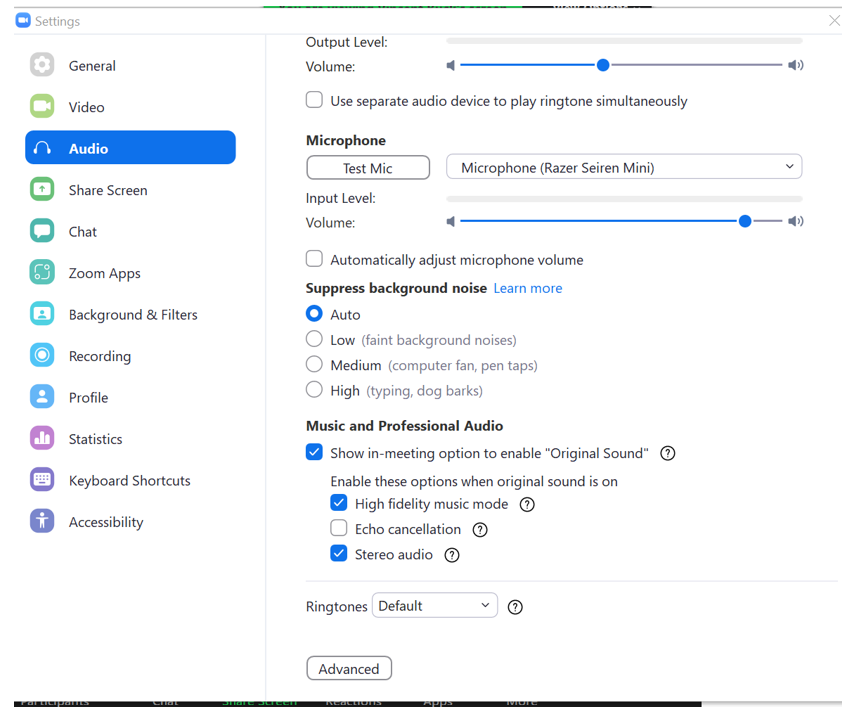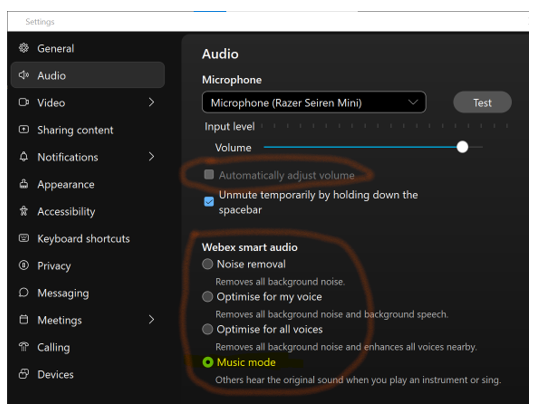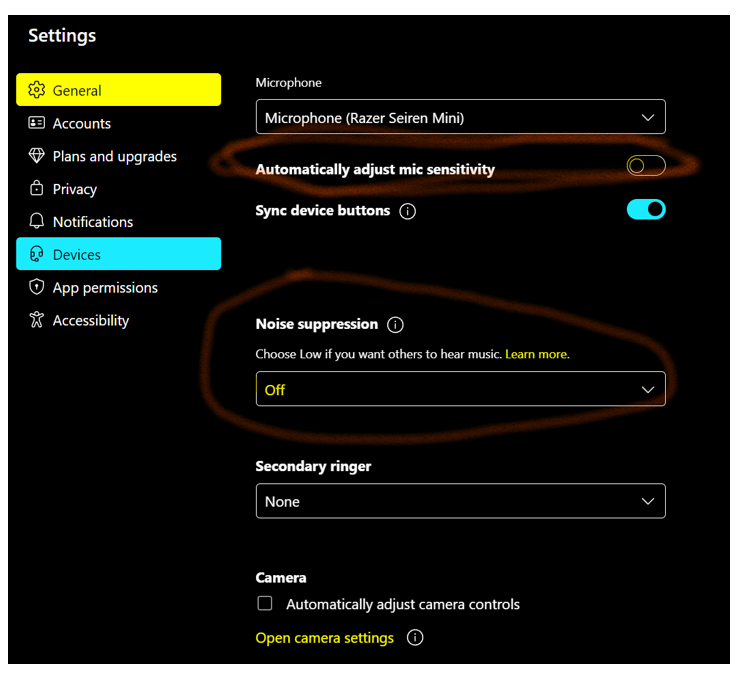2004-2024, 20 years later, AC is enough!
A different policy is necessary and possible.

The category of contract agents (CA) was created in the 2004 reform of the Staff Regulations to meet the institutions’ need for cheaper labour without taking on the significant risks of private outsourcing. Their importance has grown steadily over the years. The Institutions have found their budgets limited by the Member States. It was therefore imperative for them to look for cheaper staff, but they were not obliged to manage them so harshly and without any effort at inclusion or equal treatment.
The pandemic, which subsequently made it more difficult to organise competitions, and the setbacks suffered by EPSO only accelerated the trend. Today, contract agents, including Temporary Agents (TAs), make up almost a quarter of the Commission’s workforce. They make up the vast majority of staff in the regulatory agencies, executive agencies, offices, representations and delegations.
These workers are poorly treated in terms of their social rights, although some small progress has been made recently. Their career opportunities are very limited and, where they exist, they are under threat. Mobility is virtually non-existent. Salary progression, taking into account both the rate of reclassification (promotion) and the salary scale, is very limited. Although the tasks carried out by CAs often correspond to those of higher grades and positions, in most cases these staff members face a limited and, above all, precarious career.
For the staff, the balance sheet is therefore less interesting. It’s time for a change. We believe that it is possible to combine an approach based on social justice and equal treatment with a degree of respect for budgetary constraints.
We recommend the following path for temporary AC staff: an initial 3-year contract, at the end of which they will be reclassified (which is permitted by the DGE), and then a second 3-year contract. At the end of these 6 years, a transparent selection procedure, based on the evaluations received, an examination and an interview, allows 30% of the colleagues to be offered a temporary agent (TA) post for 4 years. After two years as a temporary agent, successful colleagues are entitled to take part in two internal competitions leading to permanent status. Unsuccessful colleagues leave the civil service with the subsequent right to a European civil service pension and social protection.
For staff on indefinite contracts, we recommend that they be offered a TA post following the same procedures, guaranteeing two internal competitions with no limit on the number of successful candidates, in addition to the internal competitions open to CAs with a number of successful candidates limited to 5% of the number of successful candidates in the external competitions. Even if the AC is unsuccessful, moving to the AT would have a positive effect on pension levels. In the event of failure, the AC would return to his department at the grade he held before becoming a TA.
There are opportunities for contract agency staff, as we have seen in Alicante with the EUIPO agency. We will come back to that.
All of this offers the prospect of development and integration for the CAs, while at the same time allowing significant budgetary savings to be made without any change in status.
EEAS

Limited progress in a context of social dialogue that remains difficult
The 25th plenary session of the EEAS Staff Committee was held in Brussels from 18 to 22 March. Although cooperation between the different trade union components remains difficult, the meeting took place in a constructive atmosphere with the hope of improving the work of the committee. Nevertheless, and unsurprisingly, discussions with the administration revolved around the same issues, with little progress made since the last plenary session. As usual, a number of meetings were held jointly with the Local Staff Committee for Non-Union Staff (CLP HU), whose plenary session was held in the same week.
So we’re more interested in the dates for the future than the new commitments. These include in particular:
- Careers and recruitment, with the implementation of the 50 measures already identified in 2017 (!) and regularly updated, which should be the subject of a special session in the coming weeks;
- Progress in implementing the “one delegation” concept under pressure from the Heads of Delegation Office;
- With regard to local staff, the possible reform of the management of the provident fund for the future, given that there is currently no basis for compensating for losses in 2022, the method of salary review in 2025, the codification of the duty of care towards local staff following recent evacuations (Afghanistan, Sudan, Gaza, etc.), which should be discussed in the EUDEL framework.
However, it is clear that the particularly tight budgetary situation significantly limits our room for manoeuvre: we are still €40 million short of the 2024 budget. Budgetary constraints have an impact on recruitment/promotion prospects: AST 10/11, certification, internal competitions (still scheduled before the end of the year for AD 6, AST 2 and AST-SC 2), AST/SC promotion, reclassification of local staff, etc. A Task Force is working on proposals for savings which could eventually lead to a reduction in the number of Delegations. At this stage, there will be no overall assessment of the distribution of the workload in delegations, such as the one that the Commission will carry out in 2022 (“Work Load Assessment in Delegations”, WLAD).
Teleworking and the new work organisation measures (flexitime) clearly continue to pose implementation difficulties, with few staff present in the headquarters offices. A satisfaction survey could be useful, including on the open-space policy, if only so that the joint committees can start to assess the situation and make proposals with a view to the 2025 review. It should be noted that staff have not yet had recourse to these committees (headquarters and delegation[1]), no doubt due to a lack of information, as it is already possible to appeal against decisions in this area. There are also no provisions for local staff in delegations, although this should soon be the subject of a social dialogue.
It should be noted that the administration has put forward provisions to combat harassment, but these are too often difficult to prove and cover only a limited number of cases, leaving only the provisions of Article 24 as a last resort. Measures for local staff have just been adopted. It is regrettable that the Commission and the EEAS delegations apply different procedures, particularly as regards the measures to be taken and even the sanctions to be applied.
Finally, in the background, the tensions over the revision of the Framework Agreement, the internal operating rules of this committee and even the decision that created it continue, with the paralysis of the social dialogue and the systematic obstruction by some of the appointments to the joint committees. While it would be in nobody’s interest to provoke new elections, it is urgent to find a modus vivendi that respects the votes of the electorate and makes it possible to defend the rights of colleagues.
[1] Functional mailboxes: EEAS JOINT COMMITEE WORKING TIME HQ, EEAS JC TELEWORK DELEGATIONS
How to defend the purchasing power of colleagues working in Luxembourg ?

With the same qualifications and grades, colleagues working in the European institutions in Luxembourg have less purchasing power than their colleagues in Brussels. The following proposals have been made to the various trade unions in Luxembourg to improve the situation, taking into account the different positions involved.
To the staff of all the European Institutions based in Luxembourg.
To the members of the staff committees of the European institutions and the leaders of the European civil service trade unions.
For many years, colleagues working in the European institutions based in Luxembourg with the same qualifications and grades have had less purchasing power than their counterparts in Brussels.
They receive the same remuneration as their colleagues in Brussels, while the cost of living in the Grand Duchy, whether it be housing or health care, is much higher. This situation was also recognised in the conclusions of a study commissioned by the European Commission.
Faced with this persistent injustice, which undermines efforts to improve the “attractiveness of Luxembourg”, we believe that the time has come to join forces to put forward common demands aimed at improving the living conditions of the European Union’s staff in Luxembourg in the short term.
Unfortunately, the budgetary possibilities are extremely limited at the moment, given the reduction of 2.5 billion in heading 7 of the EU budget at the initiative of the European Commission at the beginning of its mandate and the failure of the Commission to obtain an additional 1.9 billion in the mid-term review of the European budget.
On the other hand, we have room for manoeuvre in the future. The direction of the next multiannual financial framework is already being decided. It is essential that the resources needed to maintain the living standards of our colleagues are included in the administrative expenditure framework for the coming years.
We must get our institutions to support this idea.
We therefore call on the leaders of the trade unions and staff committees of all the institutions to meet in Luxembourg for a first round of discussions to finalise a common platform of demands to be presented to our authorities.
As a basis for discussion, we are already proposing the following measures which, without changing the Staff Regulations, will make it possible to improve significantly the standard of living of our colleagues in Luxembourg in the next multiannual financial framework :
- The introduction of a single housing allowance for all colleagues concerned to compensate for the high cost of housing in Luxembourg;
- The development of specific measures to offset the very high cost of health care in the Grand Duchy;
- An action plan to enable contract staff to improve their professional situation through a policy of upgrading and access to temporary posts and internal competitions for permanent posts.
It is up to the staff themselves to take up these demands and, if they want to improve their situation, to demand the unity of all trade union forces to achieve them.
A reform of the Staff Regulations, as is sometimes proposed, can only lead to a deterioration in the working conditions of the entire public service. Only united demands, such as those we are proposing here, will make it possible to improve things.
Reorganisation at Fusion for Energy (F4E) at Barcelona:

U4U approached the director – Marc Lachaise – to promote social dialogue at local level. The necessary more active role of the Commission and the Administrative Board cannot replace the social dialogue within the Agency itself, as demanded by the three unions. U4U reminded the Director of this Agency of this :
Dear Marc,
First of all, we would like to thank you for the meeting of 1 March 2024 with you and the European Commission and the discussion on the new organizational structure.
The proposed organigramme represents a real revolution in relation to the current one. It will be a challenge to implement it and ensure that staff understand and share its intended benefits. We support the change in the organization to make it fit to deliver the contributions to ITER and promote the development of fusion in Europe. However, we are convinced that such change cannot be successful without the involvement of staff and, in this context, a reinforced social dialogue with the staff representatives to address concerns is crucial for its success. In addition, this important change will have an impact on the performance during the implementation period that may not be recovered with extra effort from staff. Stakeholders must be aware of it and not increase the already high pressure on staff.
We would like to bring into your consideration a number of concerns that have been raised by our members concern in relation to the proposed reorganization that in our view necessitate to be part of the upcoming social dialogue.
Rationale and Expected Benefits
The real drivers of the reorganization are still not clear to the minds of many colleagues, in particular the expected benefits of this new structure in terms of delivering better the European obligations to ITER. We believe that management should engage in a substantial effort of explanation and discussion on this point. How is this reorganization linked to the drive for more integration with IO? Is it conceived to serve this integration or are these two parallel efforts?
Content – Mission statements
While a skeleton structure has been presented to staff, the detailed content of the different units and their internal structure remains unknown, giving rise to a lot of speculation on the future of many activities as well as of the staff who are involved on their implementation today. It is necessary to undertake a detailed analysis of the current activities and ensure they are well distributed in the new structure, and subsequently present a detailed mission statement for all the different units.
Vision and Strategic objectives
An F4E Vision document was presented and adopted by the Governing Board in December 2023. It represents the strategic vision for the organization that had been missing and that the staff had been asking for in all the different staff engagements surveys and the “expression directe” exercise. Any organizational structure is a clear expression of a policy, and in this context, we fail to see how the proposed structure reflects all the points in the agreed vision. To illustrate a few examples, we fail to see how the proposed structure will “Prepare the transition from research to industry and the creation of a competitive European fusion industry (objective 3)”. The previous group on market intelligence and analysis has now disappeared and it is very doubtful whether appropriate structure and resources will be earmarked to this ambitious objective. Even if it happens inside the newly created “Procurement” and “Contracts” units, they will become secondary activities alongside the main priority linked to contract management and procurement of various hundreds of million euros. It is of capital importance that the industrial policy activities are housed in a separate entity well visible by the external stakeholders. In the same vein, it is difficult to identify where the activities in favour of the “Development of fusion talent and knowledge base for Europe (Objective 2)” will take place apart from the support inside the new Engineering and “Projects” departments. Finally, in relation to the successful BA Projects (Objectives 1 b,c and d), the ambitions related to their development and implementation of JT-60SA, TBM, IFMIF, DEMO and DONES do not correspond with the downsizing of the BA department to one Unit.
Size and purpose of units
The discussion on the size of the different units has been on the table since the beginning of the reorganization. It would seem that the Commission has been insisting to reduce the number of small units setting artificial minimum numbers of staff necessary for a structure to be a unit. This seems to come from internal Commission Guidelines which do not apply to agencies and to F4E, but seem to have become one of the guiding principles of the reorganization. In this context, different activities are being artificially put together to create larger units, leaving aside common sense and efficiency. A unit should be constituted of a coherent set of activities and its nature must be able to be expressed with a few simple words, understood by all. This is actually the situation even in the Commission (and DGENER) where one can find units composed of 5-6 staff because the nature of their activities justifies it.
Levels of hierarchy
By creating bigger units putting together activities of different nature, one is obliged to created sub-structures inside them in order to be able to implement the distinct activities. This creates de facto additional levels of hierarchy putting at the top those with little or no specialist knowledge of the area of work. Leadership in F4E is not just about leading people – it is also about technical leadership, steering people in the right technical direction. The comparison with the Commission is a very unfortunate one. If F4E was just another Commission service (working under the same rules and practices), then its own existence and sense of purpose would be questioned – why did a separate organization was created if it is simply in the image of the Commission?
Management Positions
The uncertainty in relation to the future of the current managers and the procedure for the appointment of the new positions generates further uncertainty and risks paralyzing temporarily the organization. We cannot ask managers to continue working “as if” without knowing their future. What is foreseen for those managers that may be left without a job? How can we ensure that their expertise and experience continues to serve well the organization and they remain motivated to contribute? It would be a real shame to waste invaluable resources.
More than an organizational structure
The adoption of an organizational structure is just the beginning of a long road to making it functioning well. It is important to have clear mission statements, realistic objectives and expectations, as well as the appropriate level of resources dictated by our ambitions. All the engagement and psychosocial surveys, as well as the “expression directe” have been clear that F4E has worked with unrealistic objectives and is seriously understaffed. Furthermore, F4E needs flexibility in its operation and organization – this is in the very nature of the decision to establish a separate legal entity to provide the European contribution to ITER and not doing this challenging job in the Commission services.
“Chambre d’Ecoute”
As requested, we would insist on the setting up of a Chambre d’écoute composed of representatives of the administration and the social partners to deal with those colleagues for whom no satisfying solutions would have been found at the end of the implementation of the new organizational structure. The Chambre d’écoute should have full powers to make proposals to colleagues and take decisions.
In conclusion, while we support change in improving the capacity of F4E to deliver on its obligations and ultimately lead the European efforts in fusion, we considered it absolutely necessary to provide adequate responses to the above consideration. In this context, we would like to ask you to organize as soon as possible a discussion with the staff representatives on the above issues.
Sincerely,
Georges Vlandas
Président
Protecting well-being: Psycho-Social Risks (PSR) at the European Commission

For several decades now, the labour market has been increasingly exposed to psychosocial risks (including the risks of depression at work, burnout, etc.). The European institutions are no exception. The purpose of this article is to present the concept of “psychosocial risks” and the measures taken by the European Commission to prevent and combat them.
What are Psychosocial Risks?
Psychosocial risks (PSR) have always existed, but they are now coming to the fore. But what does this term actually mean? It needs to be defined in order to better understand and prevent them. Nevertheless, the concept remains complex to define and circumscribe.
In Chapter 2 “Psychosocial risks: definitions, causes and manifestations” of the book “Psychosocial risks and quality of life at work“, researchers Franck BRILLET, Isabelle SAUVIAT and Emilie SOUFFLET explain that the difficulties in defining this concept can be divided into two aspects. The first difficulty relates to the intrinsic characteristics of psychosocial risks, i.e. the multifactorial, subjective and permeable concept of PSR:
- The multifactorial approach: the various physical and/or mental disorders are caused by a tangle of risks that are difficult to disentangle.
- The subjective concept: RPS are situated at the interface between the individual and his or her work situation, and defining RPS therefore requires a variety of non-exhaustive criteria to be taken into account.
- The porous concept: the boundaries between private and professional life have become more ‘porous’, making it difficult to identify what individuals ‘import’ and ‘export’ from their private lives to the workplace and vice versa.
The second difficulty relates to the frequent confusion between determinants and their effects, between causes, their manifestations and their consequences. As a result, PSR is often equated with other concepts such as work stress or burnout, even though these concepts are observable examples of PSR. This confusion leads to a simplistic view of PSR.[1].
However, these researchers explain that a definition of PSR has now been agreed by institutional actors. This definition comes from the Collège d’Expertise sur le suivi statistique des risques psycho-sociaux au travail, and more specifically from its final report of 11 April 2011. According to this college of experts:
” Psychosocial risks at work are risks to mental, physical and social health caused by working conditions and organisational and relational factors that are likely to interact with mental functioning “.[2]
This academic definition of PSR provides an insight and understanding of what the concept encompasses. But what about the European Commission’s vision of RPS?
Psychosocial Risks and the European Commission
With PSR now a key concern, the European Commission and the European institutions in general have made it a priority issue. But how are they dealing with these risks?
The European Commission considers psychosocial risks and their impact on mental and physical health to be among the most sensitive issues in the field of occupational safety and health (OSH).
The European Agency for Safety and Health at Work (OSHA) defines RPS as:
” Psychosocial risks arise from the poor design, organisation and management of work, as well as from a poor socio-professional context, and can have negative psychological, physical and social consequences “.
It draws up a list of the working conditions most likely to lead to RPS:
- Excessive workloads;
- Conflicting demands and lack of clarity about the employee’s role;
- Lack of involvement in decisions affecting the worker;
- Lack of influence over the way work is done;
- Poor management of organisational change;
- Job insecurity;
- Ineffective communication;
- Lack of support from peers or management;
- Psychological and sexual harassment and difficult customers, patients, pupils, etc.
The Commission takes a multi-dimensional approach to PSR, whether from an individual, collective or economic/state/productivity perspective.
In addition to the mental health problems associated with PSR (burnout, anxiety, depression, suicidal tendencies, etc.), workers suffering from prolonged stress can develop serious physical health problems such as cardiovascular disease or musculoskeletal disorders.
In addition to the harmful effects on the health of individuals, the Commission identifies other problems associated with PSR, in particular the negative impact of PSR on the efficiency of organisations and on national economies.
PSR has negative effects at the organisational level. The consequences for organisations can be many: poor overall business performance, increased absenteeism and presenteeism, higher turnover rates and higher accident and injury rates. Absences related to mental health tend to be longer than those related to other causes, and work-related risk factors are a major contributor to higher rates of early retirement. The costs to business and society are estimated to be significant, running into billions of euros at national level.
The Commission wants to support/develop a quality psychosocial environment that promotes good performance and personal development, as well as the mental and physical well-being of workers. Despite these clearly stated intentions, what action has the Commission taken in relation to PSR?
The European Commission’s action to prevent and combat Psychosocial Risks
- Action already taken by the European Commission
For about ten years, a team of volunteers (HRD7 – Greening, Occupational Hygiene and Buildings Unit) has been carrying out missions to prevent and combat psycho-social risks and mental health in the workplace.
This initiative reflects a genuine internal desire to create a healthy working environment in which European employees feel more comfortable in their respective workplaces. Over the past ten years, this team has worked with 15 of the European Commission’s 43 Directorates-General and Services (DGS) to implement prevention campaigns on PSR and well-being at work.
The initiative taken by our colleagues is therefore to be commended and encouraged, as they are not necessarily specialists in this type of issue, but are nevertheless taking steps to train themselves to ensure that their prevention campaigns are coherent and appropriate.
U4U supports this initiative and the colleagues involved.
- Actions taken following the Occupational Health and Safety Summit on 15-16 May 2023
On 15 and 16 May, the Swedish Presidency and the European Commission organised the “Occupational Safety and Health (OSH) Summit”. The summit focused on psychosocial risks. In particular, it was noted that psychosocial risks and mental health at work are now considered to be growing problems in the context of occupational safety and health. It was also stated that these problems need more sustained attention and that this type of problem needs to be prioritised.
The European Commission undertook to follow up on the Summit conclusions to improve mental health at work in full respect of the tripartite principle. It will also continue work on the revision of the Workplaces Directive (89/654/EEC) and the Display Screen Equipment Directive (90/270/EEC). In addition, it will support the implementation of the European strategy on care through actions that contribute to the mental well-being of carers and those receiving care.
The European Commission has launched a number of flagship initiatives to prevent and tackle psychosocial and mental health risks at work. These initiatives include:
- The Commission will carry out a peer review of legislative and enforcement approaches to tackling psychosocial risks at work in the Member States, with a view to presenting an EU-level initiative on psychosocial risks in the medium term, depending on the results and the contribution of the social partners.
In addition, the European Agency for Safety and Health at Work (EU-OSHA) runs various campaigns to raise awareness of psychosocial risks in EU workplaces:
- A first EU-wide campaign will be run by EU-OSHA from 2023 to 2025. It is called ‘Healthy Workplaces – Safe and healthy work in the digital age’ and focuses on mental health at work.
- A second EU-wide campaign will be run by EU-OSHA from 2026 to 2028. It is called “Healthy Workplaces – Psychosocial Risks and Mental Health at Work” and focuses on new and neglected occupational sectors, including agriculture and construction, and groups, including low-skilled workers, migrants and young people[4].
U4U supports the implementation of these prevention campaigns by EU-OSHA and encourages the generalisation of this type of approach within the various European institutions.
[1] BRILLET Franck, SAUVIAT Isabelle, SOUFFLET Emilie, « Chapitre 2. Les risques psychosociaux : définition, causes et manifestations », dans : , Risques psychosociaux et qualité de vie au travail. sous la direction de BRILLET Franck, SAUVIAT Isabelle, SOUFFLET Emilie. Paris, Dunod, « Management Sup », 2017, p. 39-61. URL : https://www-cairn-info.bibelec.univ-lyon2.fr/risques-psychosociaux-et-qualite-de-vie-au-travail–9782100760541-page-39.htm
[2] Ibid
[3] Rubrique « Risques psychosociaux et santé mentale au travail » disponible sur le site internet de l’Agence Européenne pour la Sécurité et la Santé au Travail (OSHA) à l’URL suivant : https://osha.europa.eu/fr/themes/psychosocial-risks-and-mental-health
[4] Rapport de la Commission Européenne, « Communication de la Commission au Parlement Européen, au Conseil, au Comité Economique et Social Européen et au Comité des Régions sur une approche globale en matière de santé mentale » du 7 juin 2023 (COM/2023/298 final), trouvable à l’URL suivant : https://eur-lex.europa.eu/legal-content/FR/TXT/?uri=CELEX:52023DC0298
Ukraine

Latest news on social action by European civil servants
For more than two years, European public sector unions have been working together to show solidarity with Ukrainian refugees. Below is the inter-union appeal for funds, which reports on the actions undertaken. Thank you for your support.

Development and integration of Ukrainian refugees in Brussels
Latest news on social actions initiated by European civil servants

Avec le soutien de la banque alimentaire Bruxelles-Brabant A.S.B.L.
Historically, the EU’s Ukraine action since 2022 has aimed to provide basic necessities to people who have fled Ukraine as a result of the ongoing conflict.
The aim is to provide families with help and support so that they can better integrate in the Brussels-Capital Region.
Donations are distributed via the premises at rue de Theux, 49, 1040 Etterbeek.
It’s a real success! Despite the decrease in the number of applicants, the need is still there.
What has been achieved so far:
- A warehouse that we have equipped is on loan from the Etterbeek commune (rue de Theux, 49-1040 Brussels);
- Refrigerators, equipment, collections thanks to the OIB;
- Language courses have been organised by retired members of the institutions to help refugees integrate and become self-sufficient;
- At the end of 2023, parcels and medicines were sent to Ukraine to support the families.

And all this with an administrative cost of €0.00, thanks to the volunteer work of our colleagues and the self-management of the refugees!
We would also like to thank the association “Femmes d’Europe” for providing us with toys to brighten up the children’s day. Last but not least, a big thank you to the Office for Infrastructure and Logistics in Brussels (OIB) for the storage, logistics and furniture they provided.
| To make a direct donation to the share: “Action Ukraine EU” BE20 0017 6787 9156 To make a direct donation in kind: Drop off your non-perishable food items in the Commission’s mail room, marked “For the Ukraine Action”. Delivery will be made on rue de Theux, 49, thanks to colleagues from the OIB’s central mail room. |
The acoustic roots of “Zoom fatigue” – 2nd part : solutions

The problematic sound of videoconferences and its consequences on stress and hearing health is a subject U4U has taken up since the pandemic. It is relevant especially for interpreters, but also for all those who have videoconferences as a tool in their daily lives.
In our last edition, we analyzed the highly processed sound of these conferences as source of the problem.
Today, we present several solutions.
An article by Andrea Caniato, voice consultant, certified voice trainer (Applied Physiology of the Voice) and EU accredited conference interpreter.
Videoconferencing platforms are designed to manipulate and alter by default the way you sound. Many people, including an embarrassingly high number of audiovisual professionals, still believe that the low quality of “internet sound” is due to the internet being unstable and to connectivity problems. However, good-quality sound does not use much bandwidth[1] and it is readily achievable in this day and age. The real reason why video calls sound shallow, distant, flat and unpleasant has been explained above and it has to do with the way platforms are designed (noise suppression, automatic gain control, unwarranted low-bitrate policies) and the type of microphones used to join online meetings: microphones built into laptops and mobile devices, videoconferencing headsets with boom microphones (including “recommended” models), centre-table microphones in videoconference rooms and the like. All of the above are designed to “improve” or “optimize” speech. The idea of improving and optimizing a voice might understandably seem desirable to the layperson, so huge amounts of new devices are sold every day to satisfy this artificially-induced need. But 95% of this processing is unnecessary and unwarranted since it creates more problems than it solves. Sound is a bit like fresh fish: its quality can only be preserved by a well-functioning “cold chain”, not “improved” or restored after it has been damaged. If a noise-filtered, AI-engineered signal will often ensure your voice is heard even if you are not using the right equipment, a natural and more faithful reproduction of your real voice will encourage people to actually listen to what you have to say.
But is high-quality sound possible on the internet?
The answer is yes. It is both possible and not particularly difficult. All you need to do is tweak the right settings on a suitable videoconferencing platform, and use a real, plug-and-play, standalone podcasting microphone. Satisfactory solutions start from as little as 25 € and are abundantly available from any online store.
Let’s start with the platform. In order to make your actual voice is heard in high definition, you need to be able to deactivate the default settings that trigger undesirable processing. Not all videoconferencing platforms allow this, as they seem to assume you are incapable of connecting a decent microphone into your USB socket.
Here is a list of platforms that will enable broadcast-quality sound:
1) By far the best performer: Zoom, in Hi-fi Mode.
When the Hifi Mode is activated in Zoom, Zoom will not process your input and broadcast the sound exactly as it is picked up by your microphone. This function was developed during the summer of 2020 to allow prestigious music colleges in the US to teach music during the Covid-19 lockdown. Once you have a decent microphone connected, you will be able to sound like you would on the TV or, if you are using a podcasting microphone (podcasting microphones start from as little as 30 €), like you would on the radio. It is genuinely that good.
The Hifi function is available free of charge to all users of an up-to-date Zoom app for Windows or Mac. It will not work from your internet browser. It has successfully been tested for over 3 years in labs and during thousands of webinars and there are absolutely no contraindications even as far as home use is concerned. It will not require too much bandwidth (video is what actually uses your bandwidth, not audio), it will not crash your computer, you will not have to sound-proof your office in order to use it[2]. Speaking at 30 cm from the microphone will automatically reduce the impact of any background noise in your room by around 90%, and whatever background noise ends up being picked up by the microphone[3], it will not annoy your listeners because it will not be made louder and more aggressive by the AI-processing you have deactivated.
Zoom HiFi is also available from mobile devices, but its performance does not compare with what can be obtained using a personal computer.
Here are the boxes you need to have checked and unchecked under “Audio Settings” :

Please note that all forms of automatic gain control, noise suppression etc. need to be deactivated or neutralized by unticking them or setting them on “auto”.
Please also note that the best results are achieved if you are using headphones (of any type) instead of computer speakers, as this will allow you to keep “echo cancellation” deactivated and further improve the quality of the sound you make.
Please also remember that if you plug a poor-sounding microphone (earbuds, integrated iPad microphone, call-centre type headset etc.) into Zoom HiFi, you will simply hear the poor sound made by your unsuitable microphone. Please also bear in mind that an “Original Sound” button will appear on the main call screen once “Music Mode” is on. You need to press that button as well to activate Hi-Fi sound properly.
2) A worthy runner-up to Zoom HiFi: Webex in Music Mode
Music mode was introduced to Cisco Webex around one year ago. Although it does not sound as impressively good as Zoom HiFi, it is still worth activating if you want to sound like a real human being. The result is perfectly acceptable when a decent microphone is used. Activating music mode on Webex is also easier than it is on Zoom: just make sure the automatic gain control function is deactivated and tick the “Music Mode” box. Under “advanced settings, make sure you are bypassing your computer’s audio drivers completely.


3) Promising the moon, delivering much less because YOUR connection is never good enough: MS Teams
MS Teams introduced a new High Fidelity Music mode towards the end of 2021 and claims that if this mode is activated, a 32kHz sampling rate at 128kbps is made available “when network bandwidth allows”. But when the network doesn’t allow, “the bitrate can be reduced to as low as 48kbps and Teams still produces good-quality audio” (source: https://support.microsoft.com). Listening tests evidence that unlike Zoom and Webex, MSTeams will probably never consider bandwdith to be sufficient to bring quality up to the required bitrate. Even when a powerful connection and a very good microphone are used, “high-fidelity” MSTeams will sound better than “basic” MS Teams, but does absolutely not compare with Zoom Hi-Fi (not even with Webex). Noise-suppressing algorithms are removed and autogain appears no longer to be working, so the option is definitely worth activating (with a couple of limitations: see below), but if you want other people to enjoy your presentation, Teams is not an option.
Blaming lower quality sound on the performance of users’ connections has long been a popular excuse in the videoconferencing business. And yet video transmission uses up 7-10 times more bandwidth than sound, so if the problem really were on the participant’s end, most people would not be able to use their webcams either… Moreover, 48kbps is hardly compatible with “good-quality audio”.
The high-fidelity music mode is found under Settings> Devices> High-fidelity music mode, but only if you have a MSTeams client AND a paid corporate license. If you do not have a paid license, a “music mode” pop-up will briefly appear on your screen if MSTeams identifies “music” in your room (!!!).
MS Teams basically makes a “better sound” option available, but only if you really know where to go looking for it, only if you have a paid license… and only if your connection is more powerful than NASA’s. In a nutshell, MS Teams does not really want you to use their hi-function, and sound quality is clearly not a priority in the MS Teams environment.

4) A bare pass: Skype
Recent versions of Skype allow users to deactivate background noise suppression and autogain, which is a good start. Bitrate is probably nothing exceptional. Deactivating those 2 functions (under advanced options) improves sound quality. Skype’s output does not compare with Zoom and Webex, but at least heavy filtering can be deactivated, which remarkably reduces signal degradation.
What about Google Meet and the rest?
On Meet and other platforms, there is not much more you can do than use a better microphone (microphones are discussed below) so as at least to reduce the amount of processing your voice is subjected to.
When you use Google Meet and basic MS Teams (and Webex, etc) your voice is bound to sound muffled and unnatural.
A good platform like Zoom HiFi will allow you to hear the actual quality of the microphone you are using. Let’s have a look at which affordable and user-friendly microphones do your timbre justice in the videoconferencing environment.
MICROPHONES
What microphones should be avoided?
The built-in microphone of your computer / smartphone / iPhone / iPad / Macbook (yes, even Macbook) webcam microphones (with a couple of exceptions), smartphone and iPhone earbuds (and all Blueetooth microphones), headsets with boom microphones (especially USB) and, above all, the microphones installed in corporate videoconference rooms (even if they were sold to your company as “miraculous”) should be avoided at all costs. They are designed with telephone quality in mind, and they actively and heavily process your voice in the ways discussed in this article (noise suppression, aggressive equalization, dynamic range compression etc). There is a huge amount of marketing behind call-centre type headsets with boom microphones and microphone arrays on the ceiling of corporate videoconference rooms. Therefore, the fact that YouTubers are recommending them, IT people are vetting them, your employer is buying you one and that all of your colleagues are convinced that they are excellent is not entirely surprising. But it is still completely wrong.
When you use these microphones, your audience will see you on screen the way they would see you on the television (possibly in high definition), but they will hear you sounding like a call-centre employee on the phone – albeit louder.
Which microphone should you use to make sure people hear your real voice?
The easiest solution is a USB podcasting or desktop microphone. This type of microphone is not intended to be used in a call-centre-type environment (where dozens of people are sitting in close proximity and simultaneously making telephone calls, from the crowded waiting area of an airport or from the terrace of a bar. This being said, these are also not the sorts of places you should be addressing a videoconference from – not if your personal image and your content are of any importance to you.
USB podcasting microphones are recording microphones, so they are designed with radio quality in mind, to pick-up the sound of your voice as faithfully as possible, without manipulating it in any significant way. Anyone can use them. All you need to do is plug one into your USB socket and select it as the default microphone in your videoconferencing platform.
Manufacturing a good microphone is not particularly expensive, and so a budget as low as 30 € will suffice to buy a microphone that will make you sound better than a talk-show host. More sophisticated microphones will cost you around 50€ and microphones giving you the equivalent of recording-studio quality will cost you between 70 and 100 €. Brands like Seiren, RØDE, Shure, AKG etc. have excellent solutions below 100 €. All you need to do is look up “podcasting microphone” in your favourite webstore.
Recommendations on specific models and makes can be found here.
USB lapel microphones are also an interesting option. They are designed to be used in interviews and broadcasting situations, so their input remains unprocessed. The USB connector will bypass your computer’s sound card and sound drivers (which are a potential source of audio manipulation). The microphone is barely visible on camera (no more visible than on the tie or neckline of a TV anchor), which will make you appear more professional. Depending on your budget and if used on Zoom (HiFi), a USB lapel microphone will give you a reasonable, perhaps even perfect equivalent of TV sound. A decent solution from a reputable brand like Sennheiser – one that enables sound quality worthy of a prime-time TV show – will cost you no more than 70€.
This type of microphone is extremely lightweight, it fits in a pouch and it is therefore very easy to carry with you if you are travelling.
Like all other types of microphones, including headset microphones[4], lapel microphones need correct placement in order to perform at their best.
[1] Excellent quality audio uses up around 10% of the bandwidth required by decent video. 96Kbps are sufficient to deliver an excellent and natural-sounding representation of a human voice and even musical instruments. A low-performing internet connection with as little as 1mbps of upload speed can broadcast excellent quality audio and video.
[2] Even if platforms insist that a sound-proof environment and a highly professional microphone are necessary to switch to their “music modes and warn users that “voice” and “speech” are better if processed by their algorithms years of practice and dozens of webinars clearly show that none of that is actually necessary. Speech processing via DSP is probably being pushed to optimize the performance of to speech-to-text engines.
[3] The “inverse square law”: https://audiouniversityonline.com/inverse-square-law-of-sound/
[4] One of the reasons why center-table microphones, headset microphones and microphones built into computers and mobile devices are heavily processed by AI-algorithms is that they are intended for incorrect use: when the microphone is kept 50 cm (or more) away from your mouth, or very close to your lips, the chances of it picking up a lot of unwanted signal are extremely high, hence the need to overprocess its output.
Towards improved medical checks

Staff representatives have recently been made aware of concerns expressed by some of you following your experiences of medical examinations. One point in particular caught our attention: the lack of empathy shown by some medical examiners.
This feedback has highlighted the need to create a more welcoming and supportive environment for those of us who are going through difficult times. It is imperative that every colleague feels respected and supported, especially in such sensitive circumstances as those affecting our health and well-being.
To this end, we have proposed the introduction of a post-test feedback system. This mechanism will allow anyone who has been tested to share their experience anonymously. The aim is twofold: firstly, to assess and, if necessary, improve the quality of the interaction with the examining doctors; and secondly, to ensure that the examination process is conducted with respect and dignity for everyone.
We would also like to remind you that any colleague who wishes to be accompanied during a medical examination may request the presence of a staff representative. This is to give you additional support and to ensure that your rights are fully respected.
In the spirit of constructive social dialogue, U4U has joined with other unions in calling for discussions to be opened on medical screening practices. We firmly believe that the well-being of our colleagues is a priority that deserves our attention and collective action.
The aim of this dialogue is to promote continuous improvement in our working conditions, reflecting our shared commitment to a respectful and caring institution. We remain confident that this exchange will lead to significant progress for all, and strengthen trust and well-being within our community.
Your voice is vital in this process. We encourage you to share your experiences and suggestions via the HR-REP-PERS-U4U-ASSISTANCE-INDIVIDUELLE@ec.europa.eu functional mail box, helping to shape a future where every employee feels listened to, valued and supported.
Together we can make a difference.
Interpreters’ hearing health

Detection of work-related accidents reveals risks that are not sufficiently taken into account
In recent months, our organisation has helped several interpreters with cases of hearing problems caused by the use of sound equipment (headsets, microphones, sound platforms) in the course of their work. U4U has also played an active role in the social dialogue aimed at guaranteeing good working conditions for interpreters at the European Parliament and the Commission.
The recent recognition of several work-related accidents related to both acoustic shock and feedback marks an important stage in our fight, in collaboration with other trade unions and the interpreters’ delegation, for a multidimensional approach to this phenomenon. We will therefore continue to fight for fair compensation for the incapacity for work and damage to health suffered by interpreters, but also for the strengthening of preventive measures, the introduction of risk studies carried out at a professional level and the modernisation of sound systems.
It should be noted that although these particular risks primarily concern interpreters, they may also affect all our colleagues, as the use of headsets and microphones has become much more widespread since the spread of teleworking and remote meetings.
We will therefore continue to monitor this issue closely.
Problems at work

Don’t be on your own!
As the saying goes, “Prevention is better than cure”.
Every week, however, we are confronted with situations in which colleagues consult us about situations that are “at the end of the line” in an administrative procedure. Whether it’s people who come to us after a bad appraisal to see how it might affect their promotion, colleagues who come to us after a disciplinary summons only when the sanction has been decided, or people involved in a conflict at work who only call us when the situation has escalated significantly.
For all these people, our message is the same: if you are facing a difficult situation, consult us as soon as possible. The solutions we can offer at the beginning of a difficult situation are usually the most effective and the quickest.
So never hesitate to contact us as soon as possible if you are faced with a complicated situation. This will enable us to provide you with the most appropriate assistance for your situation.
U4U, serving you better!

| U4U’s main resolution is to serve you even better. To achieve this, we have created direct links between you and the team that can best help you. So : – If you require personal support, please email to HR-REP-PERS-U4U-ASSISTANCE-INDIVIDUELLE@ec.europa.eu – If you would like information about training or coaching, please email to training.u4u@gmail.com – If you would like to contact colleagues in Luxembourg, please email to rep-pers-osp-u4u-lu@ec.europa.eu – If you would like to contact colleagues in the European Parliament, please email to u4u@europarl.europa.eu – If you wish to contact colleagues in the External Service, please email to u4unity@eeas.europa.eu – If you have any other questions, please send an email to our general mailbox: rep-pers-osp-u4u@ec.europa.eu We invite you to visit our website frequently and to join our Facebook page so that you have easier access to the latest news from the union about the training/coaching/workshops on offer, the conferences/cultural walks in Brussels and the events we organise throughout the year, as well as more general information about our statutes and our articles and reflections on the issues that concern us all. |